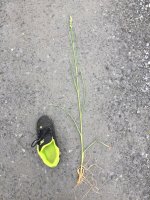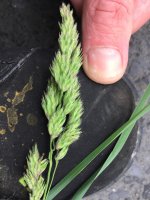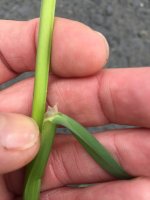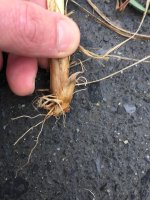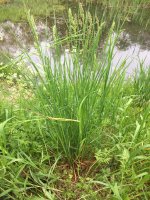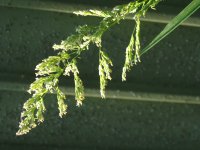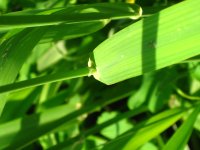-
Members of the previous forum can retrieve their temporary password here, (login and check your PM).
You are using an out of date browser. It may not display this or other websites correctly.
You should upgrade or use an alternative browser.
You should upgrade or use an alternative browser.
Help with P aquatica(I think) ID
- Thread starter metta-morpheus
- Start date
Migrated topic.
Or maybe brachy, because that has no rizhom growth correct?
What else should I be looking for? This is hard! More than just those pictures, there were 2 other types of grass that were pretty close to that as well, with minor differences in the same area.
grollum
Rising Star
One thing I didn't realize when I started searching for Phalaris is that not all grasses flower at the same time. So I searched for many days again and again and only saw Dactylis glomerata because it was not the time for Phalaris to flower. But finally after some more weeks the Phalaris showed its heads as well and I could quite easily see the difference to other grasses. You could check when different Phalaris types in your area are flowering.
It helped me a lot by taking lots of photos with me which show different parts of the wanted plants and compare them with the discovered flowers.
It helped me a lot by taking lots of photos with me which show different parts of the wanted plants and compare them with the discovered flowers.
Thanks for that info. I saw a ton that looked like all leaf with no sign of seed head yet. I just thought that was not what I was looking for, but it sounds like on the contrary it might be. I’ll bring some photos for comparison when I check again. Thanks again
downwardsfromzero
Boundary condition
I will post real pics of a botanically confirmed P. aquatica tomorrow, or you can just search my posts as I've definitely posted pics of it before.
The pictured grass is definitely the ol' Dactylis Glomerata(orchard grass) which contains gramine and no tryptamines.
It seems Dactylis Glomerata is the only species in that genus.
Some believe there are different phenotypes
Wiki: The taxa show several different levels of polyploidy. Dactylis glomerata subsp. glomerata and D. glomerata subsp. hispanica are tetraploid forms with 28 chromosomes. Several of the other taxa, including D. glomerata. subsp. himalayensis (syn. D. himalayensis), D. glomerata subsp. lobata (syn. D. polygama), D. metlesicsii, and some forms of D. smithii, are diploid with 2n = 14; hexaploids with 42 chromosomes also occur rarely.
If Dactylis Glomerata is growing near you, then Phalaris Arundinacea should be located somewhere
closeby. Check by forests, fields, and rivers. Some even grow near beaches if you live near a sound
or bay.
It seems Dactylis Glomerata is the only species in that genus.
Some believe there are different phenotypes
Wiki: The taxa show several different levels of polyploidy. Dactylis glomerata subsp. glomerata and D. glomerata subsp. hispanica are tetraploid forms with 28 chromosomes. Several of the other taxa, including D. glomerata. subsp. himalayensis (syn. D. himalayensis), D. glomerata subsp. lobata (syn. D. polygama), D. metlesicsii, and some forms of D. smithii, are diploid with 2n = 14; hexaploids with 42 chromosomes also occur rarely.
If Dactylis Glomerata is growing near you, then Phalaris Arundinacea should be located somewhere
closeby. Check by forests, fields, and rivers. Some even grow near beaches if you live near a sound
or bay.
I’m starting to lean towards getting some seeds and cultivating my own to start so I can have some hands on experience with a confirmed species, and then maybe be able to distinguish better in the wild next year. Downwards: I have looked a handful of confirmed pics through the forum, but it’s a lot harder when I got to it. There were like four different types that were only different by a slight detail in the same place. Pics were hard to translate to the field. But please, still post some pics. I’m not gonna stop looking!

